1 of 25
Download to read offline
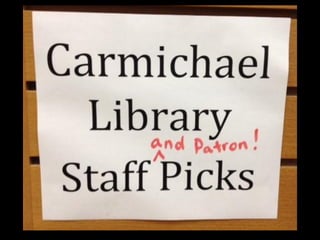

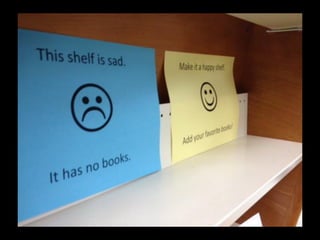

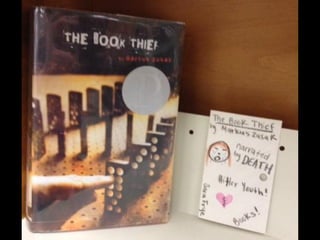

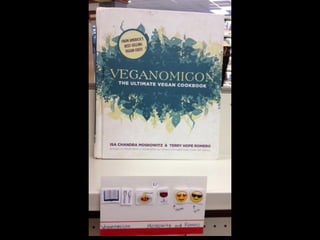


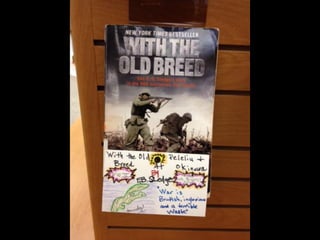
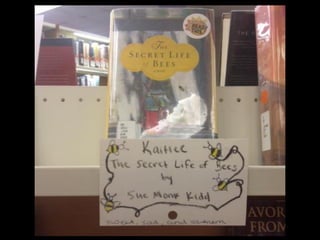


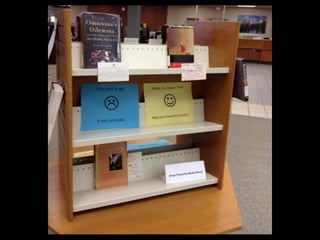
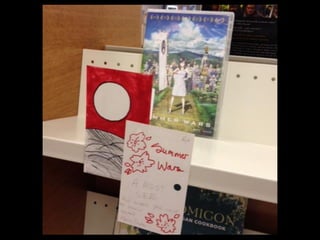
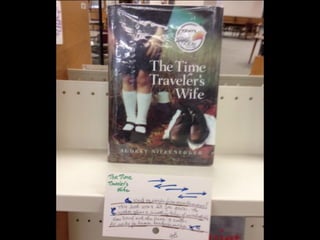

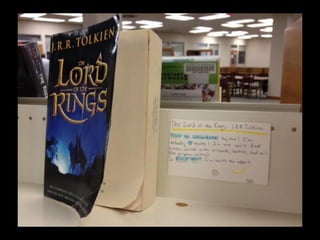

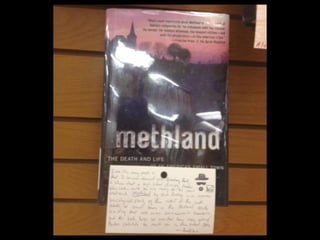
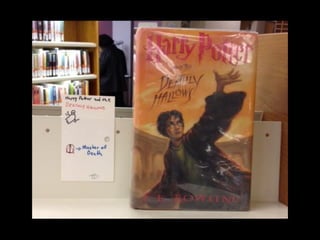

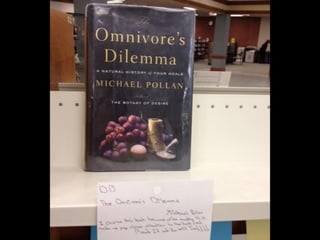


Ad
Recommended
News Sleuths Game Boards - Editable
News Sleuths Game Boards - Editablelmwallis
╠²
The document outlines a framework for assessing the credibility of a publication and its authors, including identifying available information and verifying expertise. It emphasizes searching for additional viewpoints on the topic and using resources like Snopes to check the accuracy of the claims made in the article. Points are allocated based on the quality of the sources and their content.Curing Fake News Phobia - Editable ║▌║▌▀Żs
Curing Fake News Phobia - Editable ║▌║▌▀Żslmwallis
╠²
The document outlines steps for an activity called "News Sleuths" where participants will explore what constitutes fake news and how to identify reliable sources of information. Participants are split into groups and given an online news article to analyze using game boards focused on the author, publication, or viewpoints presented. Groups use avatar characters to follow paths on the board and tally points by evaluating the credibility of the article. After playing, each group will share their top three findings about their publication and grade for the article.Curing Fake News Phobia - Poll Screenshots
Curing Fake News Phobia - Poll Screenshotslmwallis
╠²
Create polls and assign them to a group so you can navigate through them in presentation mode. Navigate through the group of polls using arrow buttons. Create ten polls for students to vote on as groups read headlines aloud.Curing Fake News Phobia ║▌║▌▀Żs
Curing Fake News Phobia ║▌║▌▀Żslmwallis
╠²
1) The document outlines a plan for students to play a game called "News Sleuths" to help them become more savvy interpreters of online news.
2) As part of the game, students will discuss what constitutes "fake news" in groups, read assigned articles, and use game boards to follow paths and tally points by evaluating the articles based on criteria like the author and publication or other viewpoints.
3) At the end, groups will share their findings, including the top three things readers should know about their assigned publication, grading the article, and submitting recommendations to readers on a separate website.Digital Labor and Metaliteracy: Students as Critical Participants in Profit-D...
Digital Labor and Metaliteracy: Students as Critical Participants in Profit-D...lmwallis
╠²
This document discusses digital labor and how people's online activities can be considered work. It explores how companies collect and analyze user data from social media, online purchases, and other digital interactions to target ads and commodify information. While some see this as a fair exchange for using free services, others argue it exploits users and can influence them without their full awareness or consent. The document suggests ways to help students critically examine their online presence and value both the data and content they generate intentionally or unintentionally through normal online activities.Goldilocks Research Questions
Goldilocks Research Questionslmwallis
╠²
This document discusses the "Goldilocks Theory" for developing research questions. It identifies three types of research questions: those that are too little, too big, or just right. Questions that are too little are narrow and can be answered quickly, while those that are too big have too broad a scope. Well-developed research questions that are "just right" leave room for discovery and debate while focusing the research scope. The document provides examples to illustrate each type and offers strategies for refining questions to find the "just right" balance.Teaching with the Lonely Tablet
Teaching with the Lonely Tabletlmwallis
╠²
The document provides various strategies for engaging students in classroom activities using different apps and tools. Activities range from using whiteboard and quiz apps for feedback, to collective editing and mind mapping, emphasizing collaboration and digital interaction. Each method has its own advantages and challenges, highlighting the need for proper setup and student navigation support.Database Research Strategies
Database Research Strategieslmwallis
╠²
The document outlines a research question about how the NFL's response to domestic violence affects women. It then lists keywords related to the topic such as NFL, domestic violence, women, football, Ray Rice, violence, and power. Finally, it proposes a search strategy to research the NFL and domestic violence, stories about domestic violence survivors, and the influence of the NFL on American society.Developing Search Terms
Developing Search Termslmwallis
╠²
This document discusses how eugenics impacted women's lives in Spanish-speaking countries through government policies around sterilization, abortion, and control over pregnancy, childbirth, and motherhood. It explores how eugenics influenced women's roles through marriage, employment, and access to jobs and financial resources in countries like Argentina and Mexico.Welcome Week Presentation
Welcome Week Presentationlmwallis
╠²
The document provides a list of 14 things that new students should know about Trible Library at their university. It encourages students to utilize the library's resources which include over 300,000 books, eBooks, journals, magazines, databases and other materials. It highlights services like research help from librarians, spaces for quiet and group study, computers, the media center and interlibrary loans. The library aims to help students succeed and encourages them to take advantage of the resources and ask for assistance.Tumblr Opening
Tumblr Openinglmwallis
╠²
This document provides instructions for a group activity where students will take and post pictures to Tumblr with captions as part of a class on digital media and technological determinism. The instructions tell the group to pick a name, elect a timekeeper, then have members take photos using the iPad camera, add captions, and post them to the group's Tumblr page.Library Instruction with Instagram
Library Instruction with Instagramlmwallis
╠²
This document outlines Lauren Wallis' presentation on using Instagram for library instruction. She describes how she developed an Instagram library tour for freshman English students to make the experience fun, social, and student-guided. Wallis discusses the concepts of library anxiety, active learning, critical pedagogy, and metaliteracy that informed the project. She provides examples of student posts that addressed the learning outcomes and assessments that showed what students learned and still had questions about.ALLA Instagram Presentation
ALLA Instagram Presentationlmwallis
╠²
Lauren Wallis developed an Instagram library tour program for English 101 classes at the University of Montevallo to make library instruction more engaging for students. Small groups of students used the library's iPads to take pictures around the library, add captions and hashtags, and post to Instagram. This active learning approach helped reduce library anxiety while teaching students about library resources and controlled vocabulary. The program was successful in reaching most freshmen and achieved its student learning outcomes. Wallis hopes to expand the program to other classes and increase faculty outreach.Student-Centered Academic Libraries
Student-Centered Academic Librarieslmwallis
╠²
Academic libraries aim to be student-centered by focusing on four key areas: defining the needs and expectations of students, locating resources that meet those needs, evaluating resources to ensure quality and relevance, and teaching students how to effectively use the resources.WorldCat Overview
WorldCat Overviewlmwallis
╠²
This document provides instructions for finding books and other resources in the WorldCat catalog by entering keywords, sorting results by format, and doing advanced searches by subject to find the most specific materials. It also explains how to request books not available at the local library through interlibrary loan.Finding Print Periodicals at Carmichael
Finding Print Periodicals at Carmichaellmwallis
╠²
When searching for an article on WorldCat, the results may indicate if the journal is available in print in the library's bound periodicals, unbound periodicals, microfiche, or microfilm collections. The document provides instructions on how to locate these physical journal holdings, such as taking the elevator upstairs to access bound periodicals organized alphabetically, or checking the unbound periodicals section on the main floor for newer issues.Keyword Hot Potato
Keyword Hot Potatolmwallis
╠²
This document describes an activity called "Keyword Hot Potato" that is used to teach students how to generate keywords and search library databases. The activity involves students in small groups brainstorming keywords for topics on sheets of paper that are passed around. They then construct different search term combinations to hypothesize what information those terms may retrieve in a database search. By trying out the student-generated terms, the instructor can discuss effective search techniques and strategies with the class. The goal is for students to practice developing search terms and strategizing for database research.English 101 Research Game
English 101 Research Gamelmwallis
╠²
The document describes a library trivia game designed to teach English 101 students research skills for their synthesis essay assignment. The game has two parts: in Part 1, student teams rotate through five stations using different library resources to find background information; in Part 2, the teams compete in a trivia game answering questions about what they learned. The librarian found that most students grasped basic skills like using encyclopedias and the catalog, but some with low confidence struggled. For next time, introducing skills through video before class and adding game elements could improve student engagement and learning.Painter's Tape Pedagogy
Painter's Tape Pedagogylmwallis
╠²
The document describes three active learning activities using painter's tape pedagogy that were conducted in three different class sessions. The activities aimed to teach information literacy concepts and skills. For a children's literature class, students worked in groups to build concept maps on assigned topics. For a composition class, students solved citation puzzles in groups. For a public speaking class, students evaluated the trustworthiness of information sources and considered the purpose and audience of different resources. All activities engaged students in collaborative small group work and discussion.Instagram Opening 10/17
Instagram Opening 10/17lmwallis
╠²
The document provides instructions for a group library activity. Students are asked to choose the weirdest book in the reference section, take a photo with a library staff member, and include the group hashtag and an explanation of the photo in the Instagram caption. They also elect a timekeeper and learn each other's names.Technology for Presentations
Technology for Presentationslmwallis
╠²
This document lists 6 topics covered on various dates in November: Life after Google RSS on October 22nd, Podcasting with Audacity on November 4th, Advanced Googling on November 5th, iMovie on November 7th, and Navigating WorldCat Local on November 13th.Technology for Presentations
Technology for Presentationslmwallis
╠²
This document discusses various technology tools that can be used at different stages of creating and delivering presentations, including tools for creation like Google Presentation and Prezi; storage options like ║▌║▌▀Żshare, Google Drive, and Dropbox; tools for audience interaction such as Poll Everywhere and Google Forms; and sharing methods like tiny.cc URLs and QR codes.Find it English 101
Find it English 101lmwallis
╠²
The document provides instructions for finding different types of resources at the Carmichael Library. It explains that reference books can be found in the reference section in the back of the main floor, arranged alphabetically by call number. Unbound periodicals are located in the back left corner of the main floor, arranged alphabetically. Books in the circulating collection can be found on the top floor, arranged by call number. Groups will be assigned one of these three resource types to locate first in a scavenger hunt game.More Related Content
More from lmwallis (20)
Goldilocks Research Questions
Goldilocks Research Questionslmwallis
╠²
This document discusses the "Goldilocks Theory" for developing research questions. It identifies three types of research questions: those that are too little, too big, or just right. Questions that are too little are narrow and can be answered quickly, while those that are too big have too broad a scope. Well-developed research questions that are "just right" leave room for discovery and debate while focusing the research scope. The document provides examples to illustrate each type and offers strategies for refining questions to find the "just right" balance.Teaching with the Lonely Tablet
Teaching with the Lonely Tabletlmwallis
╠²
The document provides various strategies for engaging students in classroom activities using different apps and tools. Activities range from using whiteboard and quiz apps for feedback, to collective editing and mind mapping, emphasizing collaboration and digital interaction. Each method has its own advantages and challenges, highlighting the need for proper setup and student navigation support.Database Research Strategies
Database Research Strategieslmwallis
╠²
The document outlines a research question about how the NFL's response to domestic violence affects women. It then lists keywords related to the topic such as NFL, domestic violence, women, football, Ray Rice, violence, and power. Finally, it proposes a search strategy to research the NFL and domestic violence, stories about domestic violence survivors, and the influence of the NFL on American society.Developing Search Terms
Developing Search Termslmwallis
╠²
This document discusses how eugenics impacted women's lives in Spanish-speaking countries through government policies around sterilization, abortion, and control over pregnancy, childbirth, and motherhood. It explores how eugenics influenced women's roles through marriage, employment, and access to jobs and financial resources in countries like Argentina and Mexico.Welcome Week Presentation
Welcome Week Presentationlmwallis
╠²
The document provides a list of 14 things that new students should know about Trible Library at their university. It encourages students to utilize the library's resources which include over 300,000 books, eBooks, journals, magazines, databases and other materials. It highlights services like research help from librarians, spaces for quiet and group study, computers, the media center and interlibrary loans. The library aims to help students succeed and encourages them to take advantage of the resources and ask for assistance.Tumblr Opening
Tumblr Openinglmwallis
╠²
This document provides instructions for a group activity where students will take and post pictures to Tumblr with captions as part of a class on digital media and technological determinism. The instructions tell the group to pick a name, elect a timekeeper, then have members take photos using the iPad camera, add captions, and post them to the group's Tumblr page.Library Instruction with Instagram
Library Instruction with Instagramlmwallis
╠²
This document outlines Lauren Wallis' presentation on using Instagram for library instruction. She describes how she developed an Instagram library tour for freshman English students to make the experience fun, social, and student-guided. Wallis discusses the concepts of library anxiety, active learning, critical pedagogy, and metaliteracy that informed the project. She provides examples of student posts that addressed the learning outcomes and assessments that showed what students learned and still had questions about.ALLA Instagram Presentation
ALLA Instagram Presentationlmwallis
╠²
Lauren Wallis developed an Instagram library tour program for English 101 classes at the University of Montevallo to make library instruction more engaging for students. Small groups of students used the library's iPads to take pictures around the library, add captions and hashtags, and post to Instagram. This active learning approach helped reduce library anxiety while teaching students about library resources and controlled vocabulary. The program was successful in reaching most freshmen and achieved its student learning outcomes. Wallis hopes to expand the program to other classes and increase faculty outreach.Student-Centered Academic Libraries
Student-Centered Academic Librarieslmwallis
╠²
Academic libraries aim to be student-centered by focusing on four key areas: defining the needs and expectations of students, locating resources that meet those needs, evaluating resources to ensure quality and relevance, and teaching students how to effectively use the resources.WorldCat Overview
WorldCat Overviewlmwallis
╠²
This document provides instructions for finding books and other resources in the WorldCat catalog by entering keywords, sorting results by format, and doing advanced searches by subject to find the most specific materials. It also explains how to request books not available at the local library through interlibrary loan.Finding Print Periodicals at Carmichael
Finding Print Periodicals at Carmichaellmwallis
╠²
When searching for an article on WorldCat, the results may indicate if the journal is available in print in the library's bound periodicals, unbound periodicals, microfiche, or microfilm collections. The document provides instructions on how to locate these physical journal holdings, such as taking the elevator upstairs to access bound periodicals organized alphabetically, or checking the unbound periodicals section on the main floor for newer issues.Keyword Hot Potato
Keyword Hot Potatolmwallis
╠²
This document describes an activity called "Keyword Hot Potato" that is used to teach students how to generate keywords and search library databases. The activity involves students in small groups brainstorming keywords for topics on sheets of paper that are passed around. They then construct different search term combinations to hypothesize what information those terms may retrieve in a database search. By trying out the student-generated terms, the instructor can discuss effective search techniques and strategies with the class. The goal is for students to practice developing search terms and strategizing for database research.English 101 Research Game
English 101 Research Gamelmwallis
╠²
The document describes a library trivia game designed to teach English 101 students research skills for their synthesis essay assignment. The game has two parts: in Part 1, student teams rotate through five stations using different library resources to find background information; in Part 2, the teams compete in a trivia game answering questions about what they learned. The librarian found that most students grasped basic skills like using encyclopedias and the catalog, but some with low confidence struggled. For next time, introducing skills through video before class and adding game elements could improve student engagement and learning.Painter's Tape Pedagogy
Painter's Tape Pedagogylmwallis
╠²
The document describes three active learning activities using painter's tape pedagogy that were conducted in three different class sessions. The activities aimed to teach information literacy concepts and skills. For a children's literature class, students worked in groups to build concept maps on assigned topics. For a composition class, students solved citation puzzles in groups. For a public speaking class, students evaluated the trustworthiness of information sources and considered the purpose and audience of different resources. All activities engaged students in collaborative small group work and discussion.Instagram Opening 10/17
Instagram Opening 10/17lmwallis
╠²
The document provides instructions for a group library activity. Students are asked to choose the weirdest book in the reference section, take a photo with a library staff member, and include the group hashtag and an explanation of the photo in the Instagram caption. They also elect a timekeeper and learn each other's names.Technology for Presentations
Technology for Presentationslmwallis
╠²
This document lists 6 topics covered on various dates in November: Life after Google RSS on October 22nd, Podcasting with Audacity on November 4th, Advanced Googling on November 5th, iMovie on November 7th, and Navigating WorldCat Local on November 13th.Technology for Presentations
Technology for Presentationslmwallis
╠²
This document discusses various technology tools that can be used at different stages of creating and delivering presentations, including tools for creation like Google Presentation and Prezi; storage options like ║▌║▌▀Żshare, Google Drive, and Dropbox; tools for audience interaction such as Poll Everywhere and Google Forms; and sharing methods like tiny.cc URLs and QR codes.Find it English 101
Find it English 101lmwallis
╠²
The document provides instructions for finding different types of resources at the Carmichael Library. It explains that reference books can be found in the reference section in the back of the main floor, arranged alphabetically by call number. Unbound periodicals are located in the back left corner of the main floor, arranged alphabetically. Books in the circulating collection can be found on the top floor, arranged by call number. Groups will be assigned one of these three resource types to locate first in a scavenger hunt game.